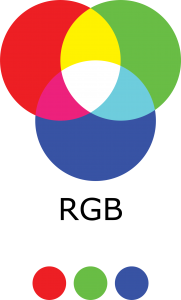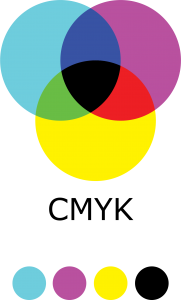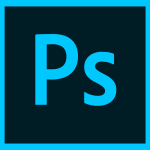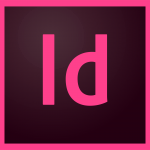RGB vs. CMYK: The Basics of Color Systems For Printing
Color is everywhere. It’s an important role in our everyday life. It can even mean the difference between life and death, as in the case of the red, yellow, and green of a stoplight. Or, it can be as simple as influencing your impression of a brand.
You use your judgment of color at the grocery store to decide if a fruit is ripe or not, correct? So how different can the importance of color become when it's about your design? When it’s your design, don’t you want the colors to exude the impression you want?
Deciding on a set color is your first difficult task when it comes to the right design. Think about it: how many colors are there in the world? The best answer is infinite! There are about 10 million documented colors a human eye can see, while our computer displays about 16.8 million to create full-color pictures. Since there are so many colors in the world there has to be some sort of way we can distinguish which should be used in certain situations.
Enter the RGB and CMYK color systems. They are the two most widely used formats for the digital and printing industries. Below we’ll explain the difference between the two systems and how to easily convert them into Photoshop, Illustrator, and InDesign.
What is RGB?

RGB, which stands for Red Green Blue, is highly used in the digital photography industry simply because it represents the same color modules used in computer screens, TV screens and mobile devices.
Most professional cameras will take images in RGB because that is also what’s distinguishable by the human eye to take the most accurate images.
When should you use the RGB color system?
As a general rule of thumb, the RGB color system should be used only in digital designs, most commonly when designing for the web. This includes designing websites and imagery and graphics for use on websites and social media.
If you want to use these designs in print, you will have to convert it to the CMYK color system.
What is CMYK?

CMYK, which stands for Cyan, Magenta, Yellow, and Black, is used in the printing industry and also refers to the color inks used. CMY covers most light color ranges while K gives it the ability to create darker, deeper colors that CMY cannot.
Why does K mean Black? It stands for Key, a shorthand for the printing term Key Plate, which is responsible for adding contrast and detail for the final image in printing
Unlike the RGB color system, CMYK is the subtractive color model because the printed ink reduces the light that would normally be reflected. The inks are used to subtract the brightness from a white background.
The CMYK colors are mixed during the printing process which can sometimes cause minor inconsistencies. For that reason, you should always look at the printed proof on a more color focused project before going through with the full print run.
When should you use CMYK?
This is the question that we get asked a lot, and truthfully, it depends upon what you're designing and it's intended use (print or digital). This includes business cards, brochures, letterheads, and any other business print collateral.
Since this color model is the only one that can produce the greatest accuracy when printing color photography, it should be your primary choice for any print job that uses more than four colors.
How to convert color settings in Adobe programs.
Currently, most design software defaults to the RGB color system. But if your project is intended for print, you need to convert from RGB to CMYK.
Here’s a quick how-to overview for Adobe programs, which are considered the industry standard.

Photoshop - click Image > Mode > CMYK Color.

Illustrator - click File > Document Color Mode > CMYK Color.

InDesign - click Window > Color, then click the dropdown button in the upper right corner and select CMYK.
But what happens if you need to design for both print and web for the same project? It’s recommended to start with the CMYK model and design all the print assets first. Then copy and convert to the RGB model and design the assets for the web. Doing so will give you a closer match in colors as RGB has a wider range of colors which may turn out quite pale when you convert them to CMYK.
In conclusion, CMYK is your friend for Printing. RGB is your friend for the web. Stick to those rules and you’re on the right path to great design.
If you need help with your next project and are not certain about your colors settings, please reach out to our team and have our professional graphic design team bring your imagination to life.